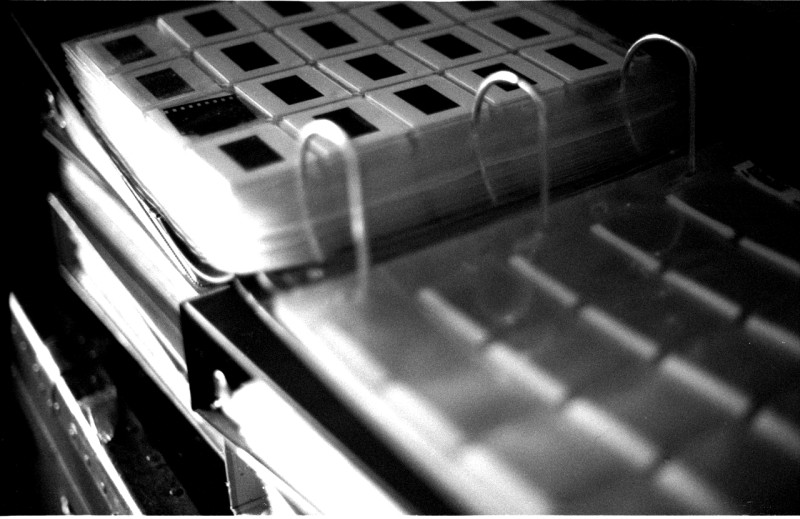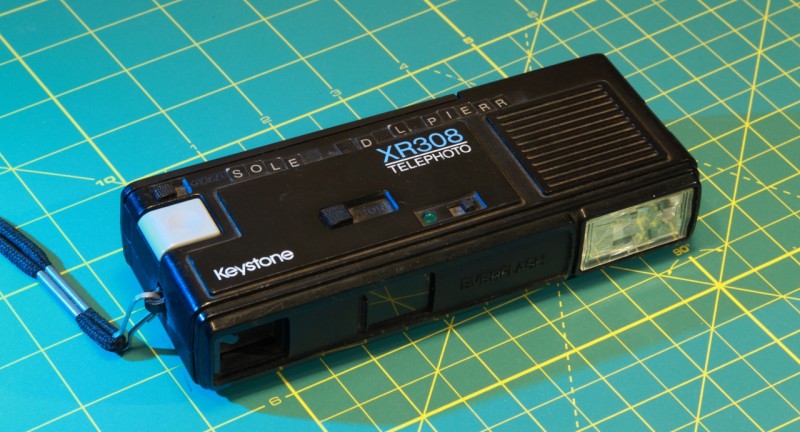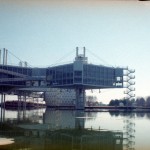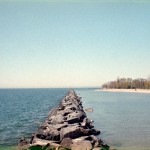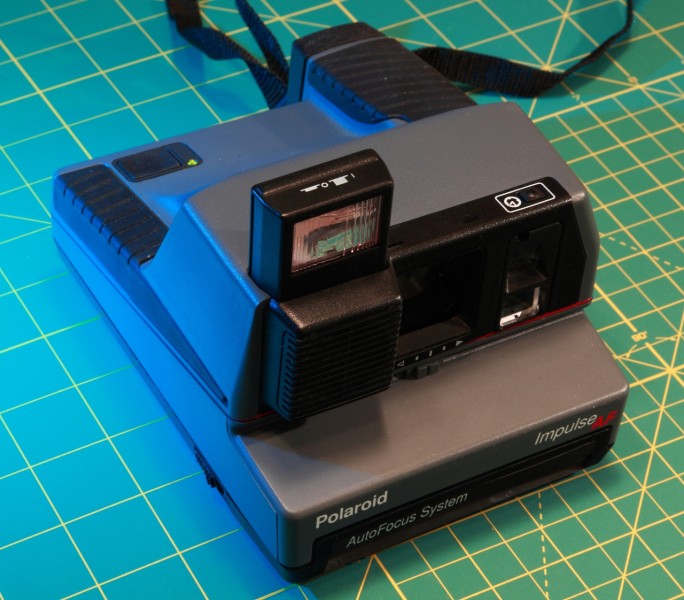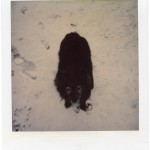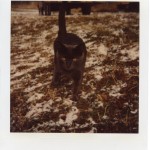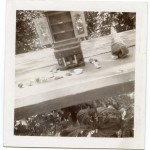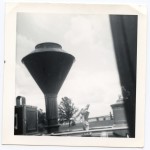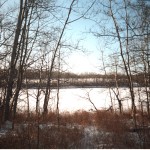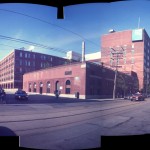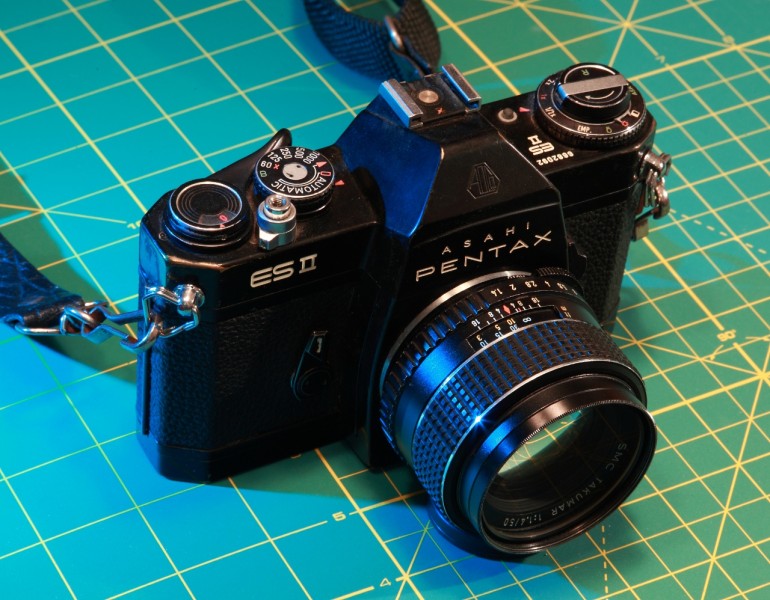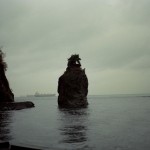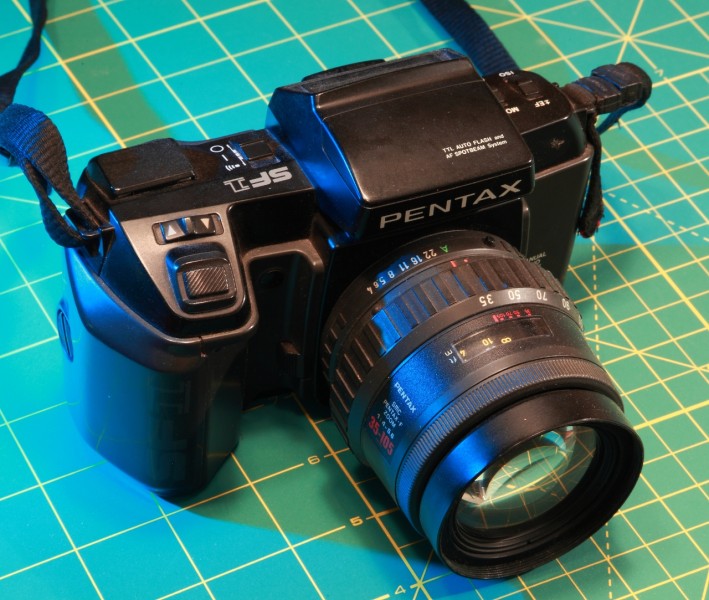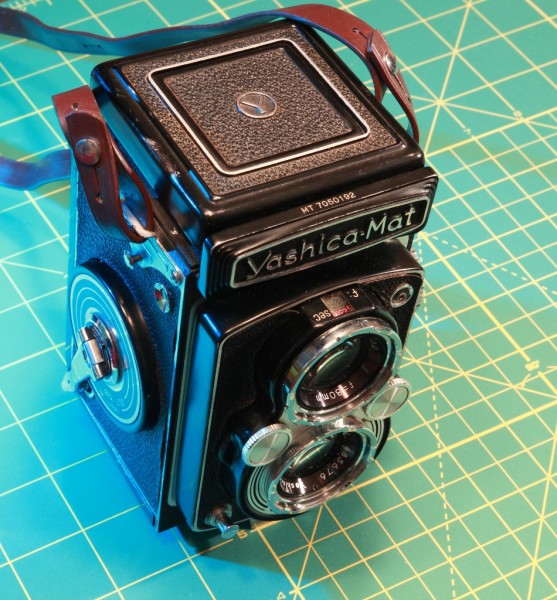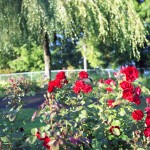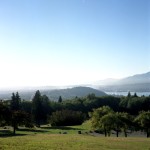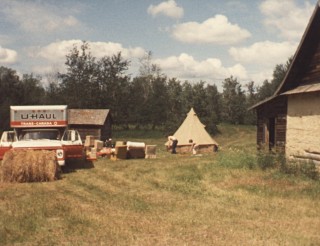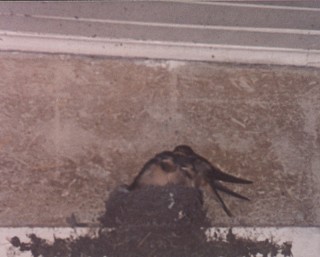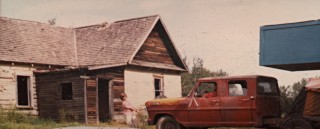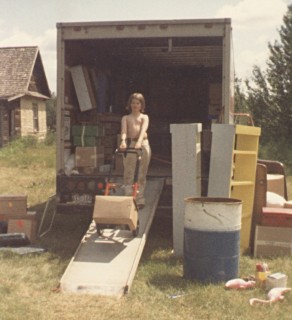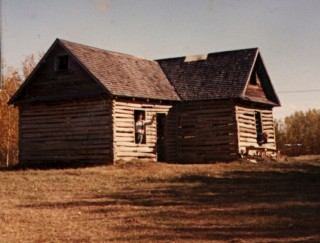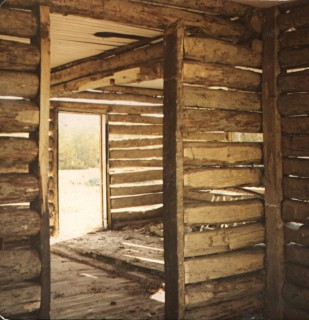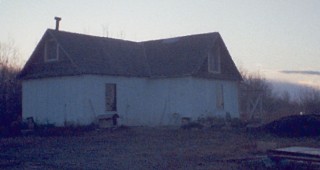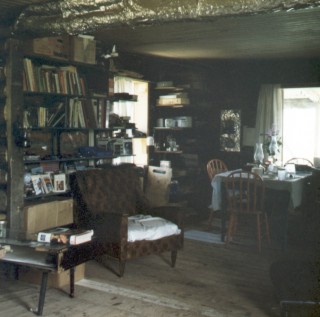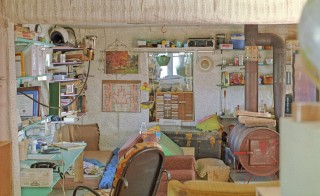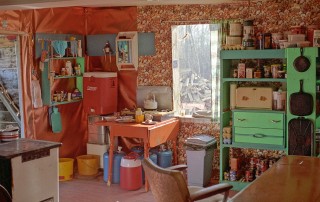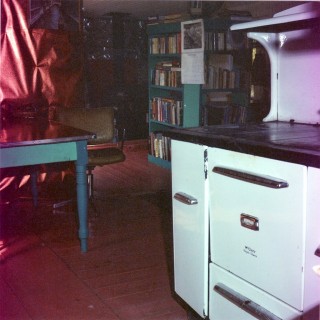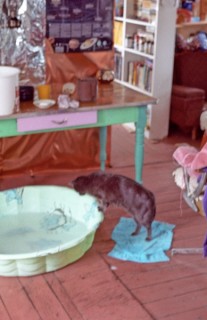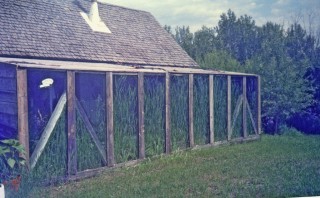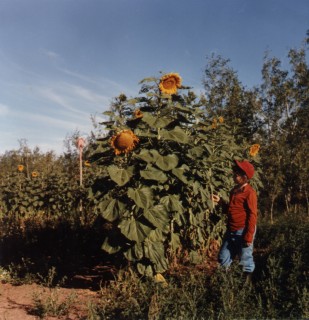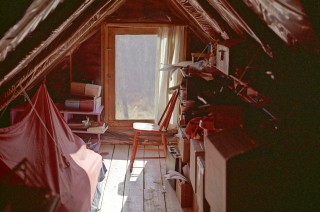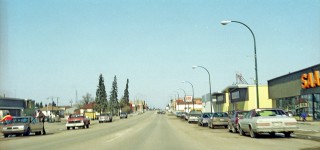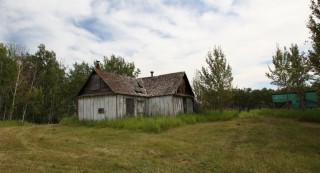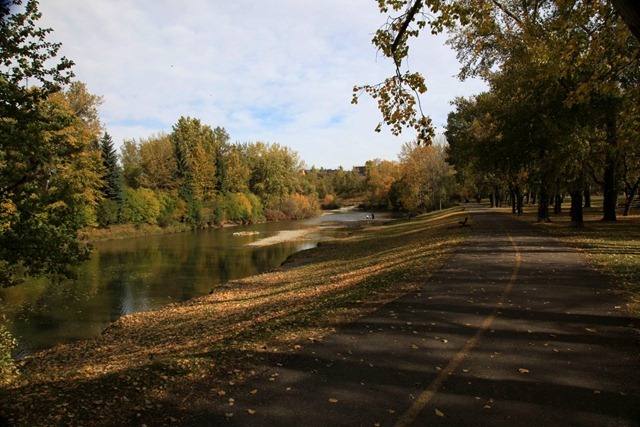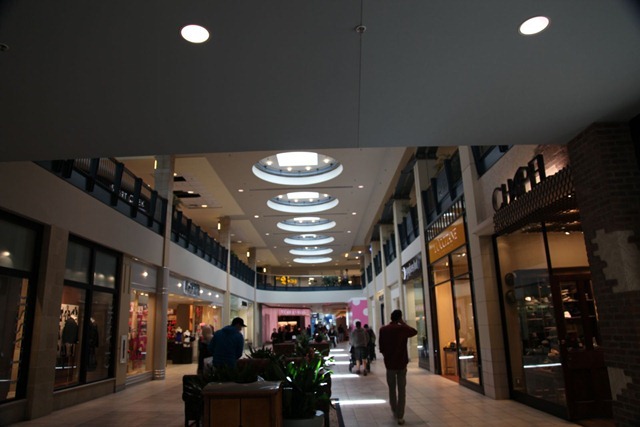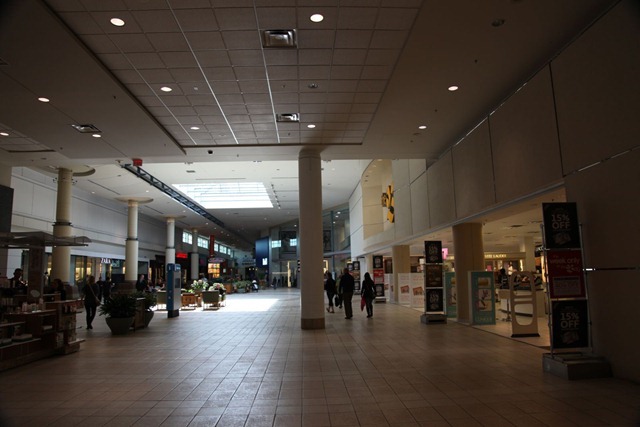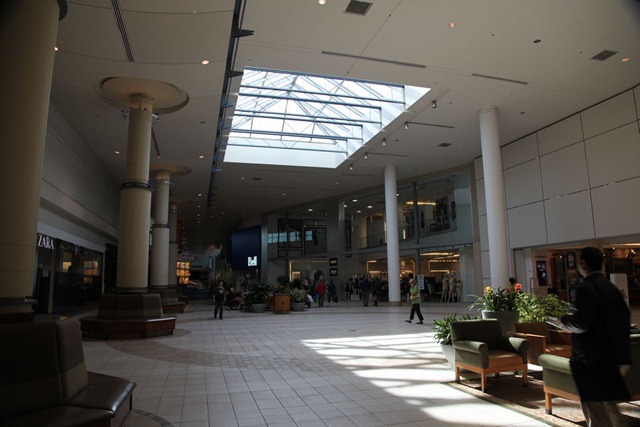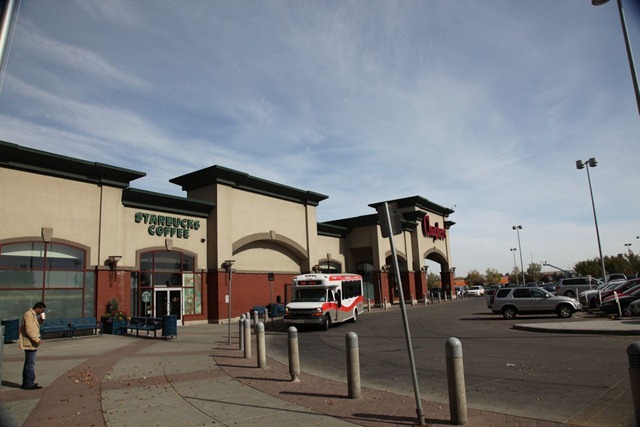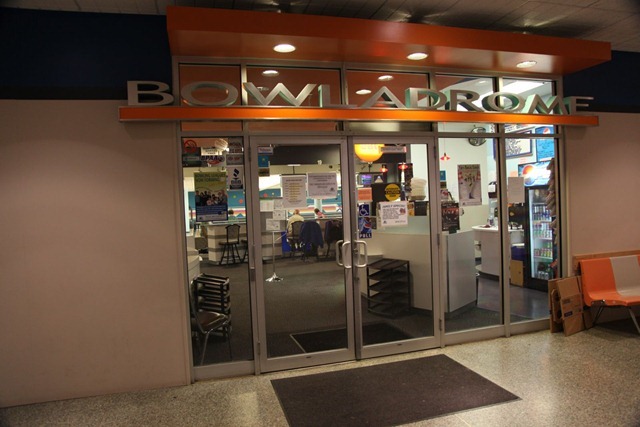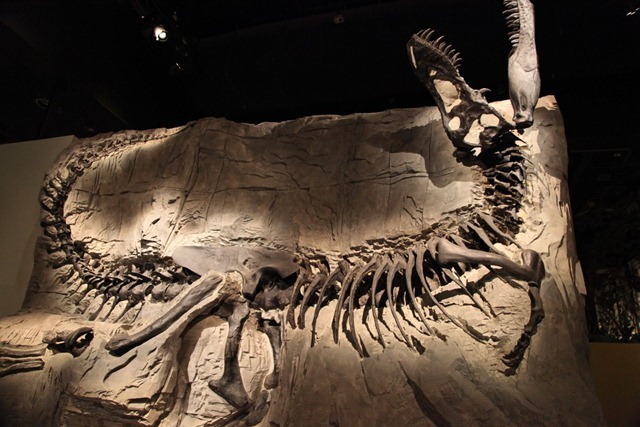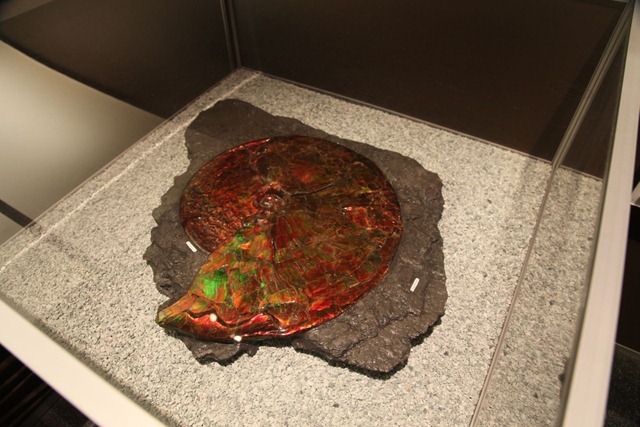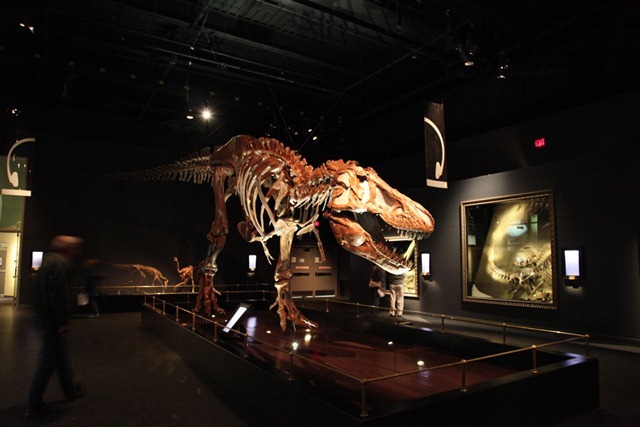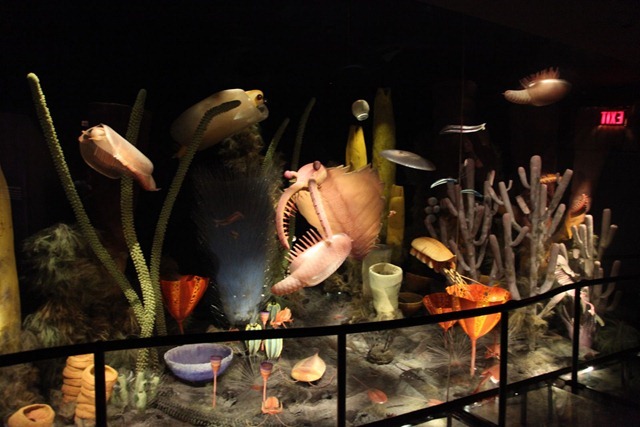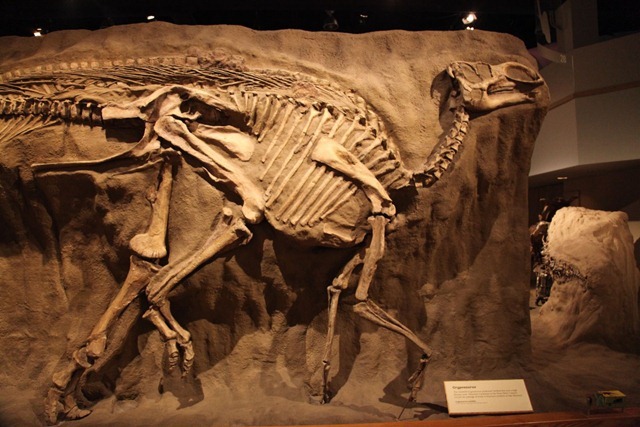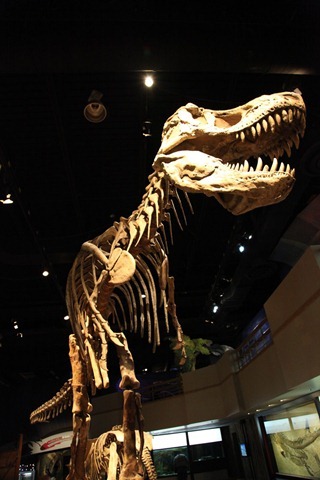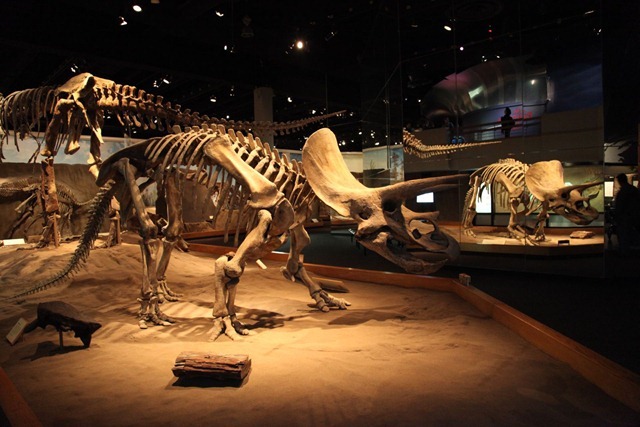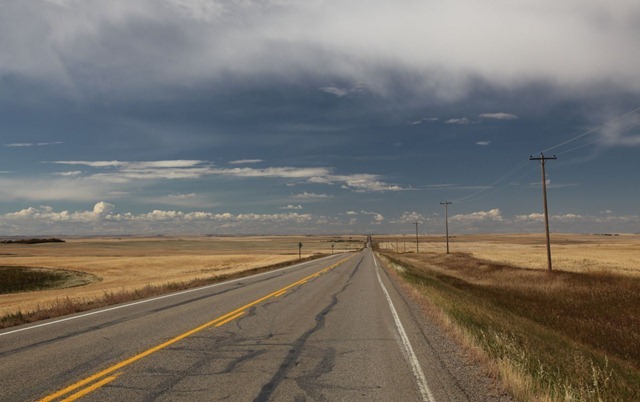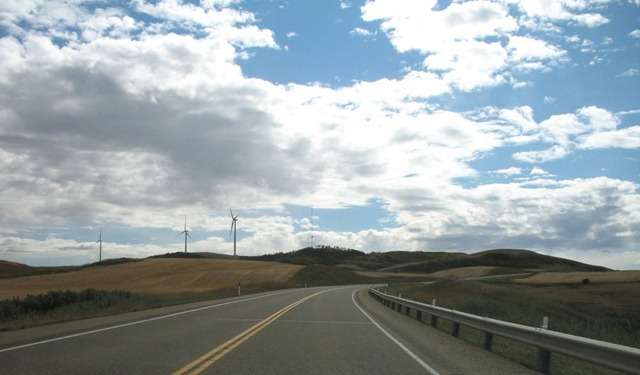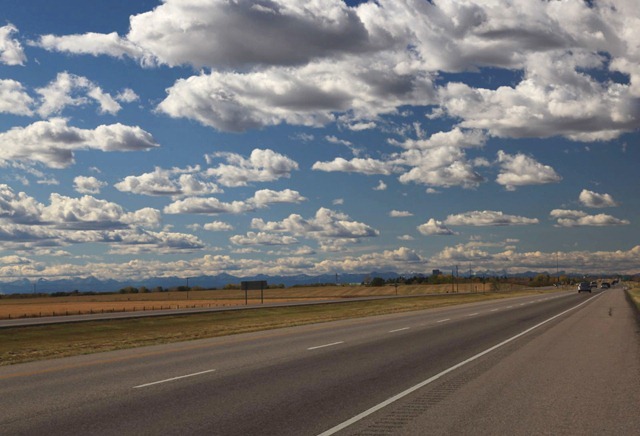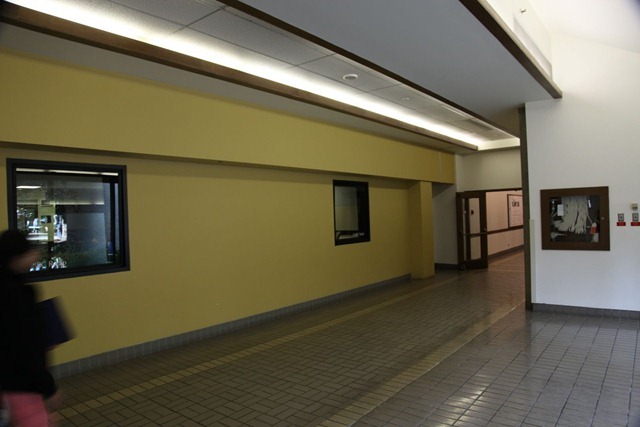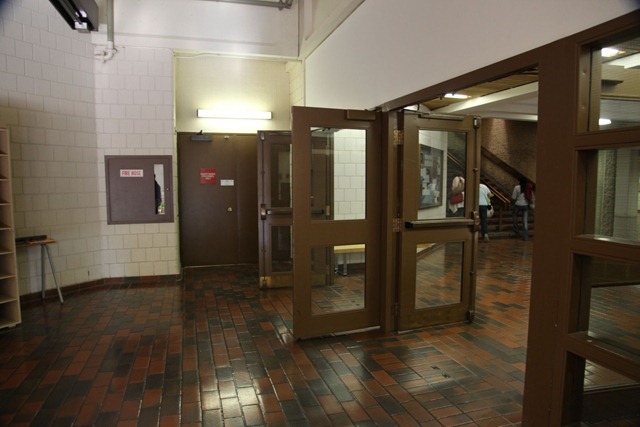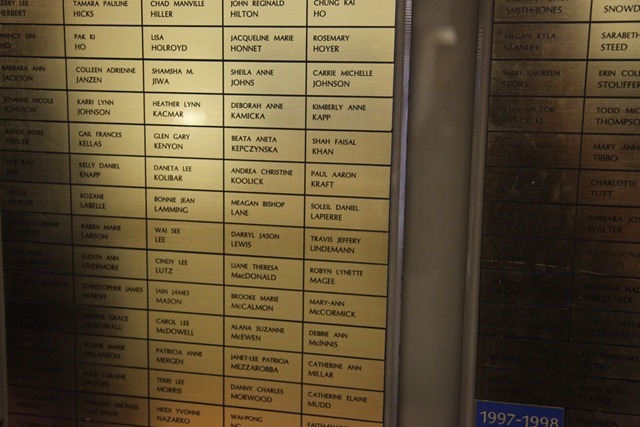End of the Roll
I just finished shooting and scanning my last rolls of photographic film. I’m done shooting film for the foreseeable future, and am going fully digital. Granted those last four rolls have been sitting unused in my fridge for six or seven years already, but their presence bothered me and now that they’re done I have some closure.
With those last rolls out of the way, I also have closure on a project that turned out to be much larger than I expected: Scanning all my film into the computer. In my approximately 32 years of shooting film I amassed 300 rolls, for a total of just over 9,000 images. That may seem tiny compared to what a typical professional film photographer would have, but it takes up to three hours to scan each roll. This scanning job has been done in bits and pieces of my spare time over the last ten years, but if I had been doing it as a full-time job it would have taken me four months!
I bought a dedicated film scanner (Nikon Super CoolScan 5000ED) for this purpose ten years ago, hoping that its batch scanning workflow would help automate the process so I could do other things at the same time. It did, but the scanner software is so flaky that most of the time I got to do other things in parallel just because of the length of time it took to scan each negative; on average I had to scan each film strip image about 1.5 times because of software glitches. Also the batch mode only works for film strips and half my film is mounted slides – but at least scanning individual frames did not expose as many bugs in the software as strips. I considered upgrading to a newer scanner for the latter half of the project, but there were not enough technology improvements to justify the expense.
Anyway, that’s all done now. What’s left is the almost as huge task of cataloging and tagging all my photos. I put a fair bit of effort into researching DAM (Digital Asset Management) software a few years ago and decided on idImager, which appears to have since been rebranded Photo Supreme, as it met more of my requirements for a better price than anything else I looked at. I’ve tried it and quite like it; the tagging and versioning workflow is great, it has some nice bonus features too.
For the record, my 9,000 scanned film photos take up just over 1TB of disk space – I’ve scanned them at 4,800 dpi or higher in 48-bit color, and they don’t compress well because of film grain and sensor noise. A typical image is 120MB big.
I’m really happy to have the scanning project over and done with. That was a lot of work.
This seems like a good time for a retrospective on my personal history with film and film cameras.
When I was a child my mother shot black and white on her Yashica-Mat TLR, and did her own darkroom work. She sometimes let me help with the developing and showed me how to play with the projector to make contact images of household objects and toys – I think that’s where my initial interest came from. It’s magic to shine a light on paper and have a permanent image appear.
—
Keystone 110
The first camera of my own was a generic pocket-sized 110 camera from Consumers Distributing. It had a built-in permanent flash, two focal lengths and a neat in-viewfinder flash ready indicator that I always wondered at the operation of – it was a clever design feature, lighting up despite having no light built in to the indicator. I shot a lot of what I now call tourist/documentary photos on this unit – that is, photos of interesting places and things, but with very little artistic merit to the photos themselves. I was too young to have developed a sense of what makes a photo great, though towards the end of this camera’s long tenure I started experimenting with composition and with panoramas made by taping prints together.
I also used a couple of disposable 110 cameras and one of those ultra-tiny kids’ “spy cameras” from the comic ads, which fits in the gap in the middle of the 110 cartridge.
Examples of pictures I took with the 110:
—
The Polaroid
Later I had a Polaroid instant camera. It was cool to get the photos immediately and the color and clarity were much better than on the 110, but the film was relatively expensive per photo and even as a child I recognized the value of having negatives available for reprints and enlargements. The Polaroid didn’t see frequent use because of its limitations, but it did last a long time.
Examples of pictures I took with the Polaroid:
The Bellows Camera
Also during my tweens I had an old-fashioned bellows camera. I believe it was a Kodak Tourist II given to me by my mother, based on her notes on her own photos. I didn’t use it much and it didn’t make much of an impression on my memory. Eventually the bellows got too many light-permitting punctures for the camera to work well, so I followed nature’s directive and took it apart to see how it was made.
Examples of pictures I took with the bellows camera:
—
The Pink Camera
My first 35mm camera was a cheap fixed-focus tourist model. This was basically the same deal as my 110 but 35mm instead. I no longer remember even what brand it was, but it look vaguely like this only pink. I got quite a bit of use out of it and started to develop a better sense of composition during this time (most of my teens).
Examples of pictures I took with the pink camera:
—
Pentax ESII
For my 20th birthday my parents gave my first “real” (read SLR) camera, a Pentax ESII with a fast 50mm prime lens. This is the film camera I got the most mileage out of, developing my artistic skill and eventually amassing a small collection of used lenses for it. When the electronics eventually failed I bought a second one to replace it, and that’s the camera I just finished shooting some of my last rolls with. I also picked up a Pentax Spotmatic, which uses the same lenses, so I could have two bodies for shoots where I would want to swap lenses a lot. For a while I did my own B&W developing at home too. The Pentax was an excellent, life-altering gift. The vast majority of my film was shot with it and most of my photographic learning was done with it.
Example ESII & Spotmatic photos:
The Crap Pentax
In the early 2000s I picked up a more modern Pentax, used, because I was curious to see what an auto-focus, auto-winding, zoom-lensed camera was like. Unfortunately this model was a bad choice, as it felt cheap and I didn`t like using it. I think I only shot one or two rolls with it, and I no longer remember which ones they were so no examples for this one.
—
The TLR
A few years ago my mother gave me her old Yashica-Mat TLR medium format camera, as she has also gone digital. In the end I only shot a few rolls with it though. It’s a nice camera but I’m put off by the lack of a built-in light meter.
Example TLR photos:
—–
I’m not saying I’ll never shoot film again; it has its applications. But digital is so much cheaper and more convenient and a good digital SLR produces pictures that seem as good, and as enlargeable, as what I shot with my 35mm SLR.
One thing that film does have going for it is its variety of grains and color treatments. Simulating the heavy grain of some B&W films or the weird color cast of cheap 110 film with digital images just doesn’t look the same – at best it evokes nostalgia for those things in those what grew up with them.
I give it twenty years before I develop a weird nostalgia for shooting film and dig out the old cameras.
Life on (our) farm
People seem to be amused when I tell tales of my life in Manitoba, so I thought I’d post a more detailed account with photos.
In the early 1980s my parents purchased 80 acres in rural Manitoba, with an ancient log cabin on it, and we moved there. I think we stayed for most of three years, and then again for a couple more years in the early 1990s. Today I’ll just talk about the somewhat rustic living conditions I had the pleasure of experiencing.
The cabin was a small three-room affair built of logs and insulated with a mixture of mud, straw and manure, which was common in the pioneer days (judging by what the neighbors told us, this cabin was probably built around 1900, give or take a couple of decades). The attic was of slightly more modern construction, having wooden shingles, a cut lumber frame and adding a finished wood ceiling to the ground floor. It hadn’t been lived in for a long time when we arrived; the windows and doors were long gone and birds were nesting inside.
These photos, taken when we were unloading our moving truck, give some idea of what it looked like and the finish on the walls:
The first thing we (meaning my father) did to make the place habitable was to knock out all the mud insulation
and then fill in the gaps with modern insulation, install doors and enlarged windows, and wrap the outside walls in plywood to deflect the wind. He also knocked out the interior walls to make it feel more spacious, so there was just one room downstairs and one up. After all that, the house looked like this:
Here’s what the interior looked like after we moved our stuff in.
There was no electricity here, and we couldn’t afford to get it installed. On the table to the right you can see a couple of the oil lamps we used for lighting at night.
To brighten things up, we painted the floor and wallpapered the interior with light colored wallpaper and shiny foil. Later we got a Coleman gas lamp, which was really bright but also made a lot of noise and gave off fumes.
In the above picture you can see the oil drum stove my father made – the wood-burning kitchen stove we bought (shown in the kitchen photos below) was insufficient to heat the place in the winter, though it made great bread. If you look closely at the photo below, you can see that we also brought in the propane cookstove from our camper – but that was only good for cooking things and not for heating. We preferred the propane stove for summer cooking because it didn’t produce excess heat and didn’t take time to get going, but the wood stove was essential in winter.
There was no water here. The well that had once been on the property had filled itself in. No streams, and lake and pond water is dangerous to drink. We also couldn’t afford to have a new well drilled, so we had to truck it here ourselves in 5-gallon camping jugs, seen under the orange table in the upper photo. Nearby water sources weren’t reliably clean, so most of the time we got our water from the town of Rossburn, which was about 25 miles away. In the first kitchen photo above, in the corner you can see an antique washing machine that we used to store washing water, and the big camping thermos on top of it was for drinking water. The orange pails on the floor were used to take waste water outside.
No water means no plumbing, of course, and without electricity you do not want to have to use an outhouse in the winter here. Our toilet was a big pail with a seat on it, placed near an upstairs window with a view of the woods, and with a curtain on the indoor side for privacy. It had to be emptied about twice a week. Bathing involved standing in a kiddie pool and pouring water on yourself from a bucket using a cup. Here’s the bathtub set up in the kitchen, as verified by our cat:
In winter we could melt snow for bathing water, so we didn’t have to make water runs quite so often.
The one utility we did get installed was a telephone, which was essential for my father to find work. It was a party line, shared with our two nearest neighbors (1/2 mile and 1 mile distant, respectively). Incoming calls signaled the intended household with distinctive rings – short ring for one, long ring for another, and two long rings for the third. If you wanted to make a call you had to first pick up the handset to verify the line wasn’t already in use. Occasionally a change in the line noise made us suspect that one or another of the neighbors was eavesdropping on our calls.
We also had a battery-powered radio. CBC national radio was pretty darn good in those days, and we passed a lot of time listening to Peter Gzowski’s “Morningside” talk radio, Lister Sinclair’s “Ideas” for science news, Arthur Black’s amusing “Basic Black” op/ed show, and Jackie Farr’s weekend comedy hour “The Radio Show”. I still think of Peter Gzowski as the voice of Canada – there’s no voice that better represents Canadian culture in my mind.
The final major improvement we made was a greenhouse, which my father built using surplus glass from a construction site in Calgary, and old lumber from a derelict barn nearby:
With this and an outdoor garden we were able to grow some of our own food. I also grew flowers, including some giant sunflowers, one of which eventually reached a height of 14 feet.
Our sleeping area was in the attic – we usually slept in individual sleeping bags, zippered up, to help keep the bugs and mice out of our beds. (We would occasionally find a garter snake in the house too, but they never came upstairs, thankfully.)
There was a problem with reading at night though – dozens of brown moths would work their way in through the roof shingles and throw themselves at the oil lamps we usually read by. Not only was it startling and irritating to have moths landing on your head or book while trying to read, it was a bit of a fire hazard because sometimes they would succeed in their attempt at glory, and would fall inside the lampshade and burst info flame – and on rare occasions this heat imbalance would fracture the lampshade too. I switched to using an electric light powered by a car battery, but that required idling the truck to recharge the battery every other day.
We stapled plastic sheets to the inside of the roof to try and keep the moths out, but it wasn’t enough. Eventually I put my bed inside a tent in my wing of the attic, so I could read with only my face and arms poking out, and sleep with the screen closed. Yes, I regularly slept inside a tent inside a house, for practical reasons.
My bedroom, bed-tent on the left. Note the plastic sheeting on the roof, which was not enough to keep the suicidal moths out.
It got a bit chilly here in the winter. We only spent one full winter here, and thereafter found reasons to be elsewhere during the coldest months. Waking up with frost crystals where your breath fell was common enough, but that one Christmas morning we woke up to find the temperature -50°C outdoors, and -30°C inside the house. We spent most of that day either in bed with long underwear and multiple socks on, or in full winter gear with our booted feet in the oven to help warm them up. I don’t think the interior temperature ever got above freezing that day. This is my “get off my lawn” story for Vancouverites or foreigners who complain about it being cold even when water is still liquid. If it had been much colder in Manitoba, we would have had to break off and melt chunks of air to breathe, ya softies! You haven’t experienced a Canadian winter unless you’ve had to light a fire under your vehicle to thaw out the oil so you can start the engine.
There was no rural mail delivery in Manitoba then, though I gather there is now. We had to drive 12 miles to the nearest town, Angusville, to pick up our mail and do our banking. That was a town of about 200 people, and all it had was the post office, bank, a cafe, two mechanics, a small general store and a hotel that wasn’t rebuilt after it burned down. Most of those services are gone now.
We got most of our supplies from the town of Russell, which was about 30 miles in the opposite direction from Rossburn. We made a weekly trip to Russell to get groceries, household goods and to do our laundry, and to entertain me – this town was large enough to have a pizza joint with attached arcade, a pool hall with arcade games, an indoor theater and a drive-in theater. Here’s what the main street looked like back then:
There were two large grocery stores, a clothing store, a Sears catalog outlet, a hospital, a small library, two hardware stores, a drugstore and a couple of passable restaurants – all the luxuries you could want. I tried to spend as much time as possible in the arcade because it was the only chance I got to play video games.
Thanks to its proximity to a valley with hills suitable for skiing, Russell has managed to play up tourism enough to avoid the zombification that has claimed most prairie towns. I returned there recently on my cross-Canada road trip, to see how things had changed. Since we left, our cabin has suffered a lot of deterioration. Animals have broken in through the decaying roof, and the interior is now a disaster zone. I wouldn’t want to go in there without a hazmat suit. Here’s what it looks like from the outside now:
The green thing on the right is the wooden camper my father built, which you might have noticed him removing from the back of the truck in one of the photos at the top. We lived in this now-stationary camper while fixing up the house. The camper is now a giant camper-shaped ant colony.
Overall, despite the rustic conditions, I rather enjoyed my time in Manitoba. It was certainly character-building, anyway. Now, as an exercise for the reader, imagine spending your late tweens and early teens in a place where the nearest other kids were 1.5 miles away and you didn’t see them at school because you were homeschooled. And there was no TV or video games or computers, because no electricity. Radio, music cassettes, books, comics and Lego were what I had. Plus the great outdoors, my family and pets, of course.
I haven’t talked at all about why we moved here, what we did while here, what there was to do in the area, who we interacted with, or why we left. Maybe some other time.
To give you the lay of the land: Map
What I’ve Been Reading: Velikovsky
Worlds in Collision, Immanuel Velikovsky, 1950
Earth in Upheaval, Velikovsky, 1952
Scientists Confront Velikovsky, Goldsmith, Sagan, Storer, Huber, Mulholland and Morrison, 1977
I occasionally like to consume the works of crackpots as a form of entertainment, and Velikovsky has a reputation as one of the greatest. Having found two of his three books (the third sounding relatively uninteresting, and I didn’t learn of it until too late) and a rebuttal by noted scientists, I read them back to back.
To sum up, Velikovsky contends that in historical times (less than 4,000 years ago), the planet Jupiter spat out a giant comet. On two occasions, around 1,500 BC and 700 BC, this comet made very close – perhaps even physically grazing – approaches to the Earth, and also knocked Mars around a bit, causing Mars to also have a close encounter with Earth. After all this, Mars settled down into its present orbit and the comet assumed a circular orbit and became what we now know as the planet Venus.
These close approaches to Earth caused the major biblical catastrophes; gravitational effects caused massive tides, accounting for a variety of flood myths around the world. Material falling from the comet’s tail became the “manna from heaven” of the biblical tale, and the rains of vermin also fell from the comet. The close contact also caused slippages of the Earth’s crust, causing its rotation to appear to pause or change direction, changing the length of the day, and moving many lands out of their accustomed climates, accounting for the flash-freezing of the Siberian mammoths, the massive anachronistic animal boneyards found in various places, and the misalignment of a few buildings that were notably constructed to have calendrical functions. Interplanetary lightning bolts and tidal effects caused the moon to melt and bubble, the bubbles being the cause of the visible circular scars we call craters.
There’s much, much more but these are the main features of his work. To back this up he cites a lot of mythology from around the world and points out selected geological oddities that he believes support his case. I’m not doing this part justice, but there are three books full of this stuff – it’s not easily dismissed, as the rebuttal shows.
(Edit: In the interest of not presenting things back to front, I should mention that I think Velikovsky’s intent was to reconcile a large number of historical and mythological catastrophes, and the planetary billiards theory is what he came up with to accomplish that purpose.)
In reading Velikovsky’s books, I found his list of geological anomalies quite interesting and was fascinated by his recounting of relevant myths from around the world, and the exciting way he made connections between them. He’s quite a good author and gives the impression of having thoroughly researched everything he writes about. However, he did frequently make one mistake that is a personal bugbear of mine – he asserted things as proven that were not. Verbal handwaving crafted to flummox the credulous. There were also several claims made that I found laughably wrong, though they may not have been known wrong back at time of writing. If you weren’t watching for these things, you could easily be taken in – he writes like a popular scientist, has footnotes and references and all that. By the end there was such a long laundry list of doubts in my mind that I had taken to reading it as an amusing alternate universe history text – a work of fiction – rather than a serious attempt at science.
But it was apparently a serious attempt at science, and it became an interesting phenomenon that drew the attention of serious scientists not because of its content but because of the way things went down. Velikovsky was rightly laughed out of all real scientific publications, so instead published his work himself, as these books. They became popular with nonscientists, and over time quite a hubbub arose over how this outsider with a good theory was being ignored by the ivory tower scientific establishment, who don’t like to admit error – this in itself a sore point of public misunderstanding about how science works. History is full, they said, of outsiders who were later proven right, therefore Velikovsky must be right – PLUS, his work makes the Bible and a lot of other mythologies all work out! Surely that’s of great value and shouldn’t be ignored.
Goldsmith, Sagan and the others organized a conference and invited Velikovsky and his supporters to present papers in support of his work, and also themselves presented papers that demonstrated how some of his key claims could not possibly be true. The major works against are presented in the third book on my list above, and they’re pretty soundly damning. For example, actual math demonstrating that even if somehow Jupiter could have ejected a mass the size of Venus, the amount of energy required to do so would have vaporized the mass in the process. And even if it didn’t, the probability of this mass having multiple near-collisions with Earth and Mars within a span of two thousand years is trillions to one against. And even then, there’s no known way to get such a body into a circular orbit afterwards, using what we know to have been present in the inner solar system at the time.
This should have put the last coffin nail in his theories, but he and his followers continued to try to shore up his crumbling edifice long after. It probably was the end of his general public popularity though.
An interesting comment made in the introductory material of the third book is that all of the astronomers etc. who reviewed Velikovsky’s work found his astronomical claims absurd but were fascinated (as was I) by his seemingly credible connection of many interesting worldwide mythologies, whereas the historians who reviewed his work found the history part worthless but thought the astronomy was credible. Velikovsky himself had scientific training, though neither as an astronomer, historian nor physicist. It just goes to show the importance of relevant expertise.
None of the papers in the third book really addressed the mythology – the closest was one that explained why his dates for some historical events couldn’t be right – and I would actually like to read a similar debunking of the mythology because I found it tantalizing.
Overall, entertaining reads on two counts: Reading the story of Velikovsky’s failed assault on the imagined “ivory tower” of science provided an interesting and unexpected perspective on the way we view science in relation to pseudoscience today, and secondly, Velikovsky’s works themselves are very entertaining if read as a history text that dropped out of a bizarre alternate universe.
More Calgary
2011/09/29
Started off the day with another breakfast at Peter’s Drive-In – can’t get enough of the place. I will be doing the same tomorrow before I leave town.
Since I was nearby, I dropped by Calgary’s Stanley Park – a small park on the Elbow River. We used to come here often because it has a convenient location by both road and bike path (Calgary has the best bike path system of any city I’ve been to), and it’s a great place for kids to cool off in the summer since there is both a pool and a shallow river to play in.
Did some book shopping at a couple of Fair’s Fair locations, then hit the Lego store again as compensation for forgetting to visit the one in Toronto when I was there.
Hung out with friends again in the evening, and saw another deer on the way to drop Frink off at home in the evening. Also got some good ideas for sprucing up my home network when I get home.
Chinook Mall in Calgary is almost unrecognizable now versus what it was when I was a kid or even when I last lived in Calgary. It’s a lot bigger now, walls have moved around, and I think almost every store is different both in identity and in boundaries, but some parts of the gross shape of the place are still there if I look at them right.
The upstairs area around this opening in the second floor used to be the food court. It was here that I ate my last ever meal from New York Fries – it had a weird taste that turned out to derive from the inclusion of a deep-fried, partially smoked cigarette.
At the end of that food court was once the theater where I saw Tron about four times during its first run, and then later a Playdium-like arcade. The latter was during the time I worked as a stock clerk in the Safeway grocery store that used to be just past where the Bell store is in these photos:
On the right, where The Bay is now, was once a Woolworth’s where I used to hang out in the video game section drooling over the latest Atari 2600 and Intellivision games, or drooling over the Lego sets – this is where my parents bought me most of my favorite Lego sets, including the never-surpassed LL 928.
Also around this area was the Radio Shack outlet where, firstly, my parents bought me a Casio VL-Tone to see if my interest in music was sufficient to warrant more development (it was), and later where just by chance I happened to be there when the clerk had one of the record players playing Kraftwerk‘s The Man-Machine, which totally captivated me – finally, music that actually sounded interesting! I insisted my parents get me that record and anything similar they could find, and the rest is an integral part of my history.
Outside the south end of the old mall (it goes further now due to the new theater), roughly where the Starbuck’s is now, was an instance of the Wizard’s Castle arcade chain (this is when I was a kid). This was probably the arcade I spent the most total hours in, as my parents would park me here with a roll of quarters while they did the grocery shopping. This is where I first saw Pac-Man, and played a lot of Missile Command and Boot Hill. It’s also where I learned that some people have inexplicable temper problems, as one guy punched a hole in the Missile Command screen. There were other games that I played but I don’t recall what they were. Elsewhere in the mall were Battlezone, Omega Race, and later on, Donkey Kong. But when quarters were short I got a lot of mileage out of playing the home system demo units in the department stores – oh, and I believe the Sears location in this mall is where my parents bought me my first home system, the Atari 2600.
One part of the mall has not changed at all – the downstairs bowling alley we sometimes used. The public library that was also in the mall basement is now gone though.
[gmap file=”__UPLOAD__/2011/09/20110929.kml” visible=”true” type=”satellite” center=”files” zoom=”auto”]
Back to Calgary
2011/09/28
Started the day with a visit to the Royal Tyrrell Museum in Drumheller. I was just there a few years ago, but it’s an excellent museum and worth revisiting, and as it turns out they did change a few exhibits since my last visit. A few pics:
Then a short drive to Calgary (via a favorite back way that has very little traffic).
Another new thing since last time: a large wind farm just south of the Drumheller canyon. This dash-cam photo only shows three out of at least twenty giant windmills dotting the hilltops along the road:
Highlight of the drive was catching sight of the mountain silhouettes before I had even reached the outskirts of Calgary:
Got my room, then went to pick up Frink from Mount Royal – where I started my Comp Sci undergrad (it was only a college back then). Wandered around the campus a bit taking pictures. Dropped in on the CS department – the only faculty member I knew who was present still remembered me 15 years later, which was a nice surprise.
The Mount Royal campus has changed slightly since I was there. Mainly in the addition of new buildings outside the sprawling central one. But also some internal changes. One of my favorite study areas is gone, replaced with more walled-in rooms.
This wall used to be all full-height window, and looked in on the tech services department that I worked in, repairing computers, when I was a student there:
Although this was actually before I was a student here, there used to be a small arcade beside these stairs in the phys ed wing. It’s the only place I’ve ever seen a Robby Roto machine, and got to play it after years of wondering about screenshots in Electronic Games magazines:
But my high scores are still up on the board – my President’s Honor Roll plaques from the two years I was there:
After that, went looking for the place I had planned to buy new tires for the Slaywagon, but it appears to have gone out of business. Did some book shopping, then met Sean and Bud for sushi downtown and had some good conversation for a few hours.
Drove Frink home after that, and nearly hit a deer on the road. For days now I’ve been internally grousing that I haven’t seen any moose on this trip (on previous trips we’ve had close encounters with meese in northern Ontario and in Riding Mountain Park), and here I nearly intersect a deer right in the big city.
[gmap file=”__UPLOAD__/2011/09/20110928.kml” visible=”true” center=”files” zoom=”auto” type=”satellite”]
